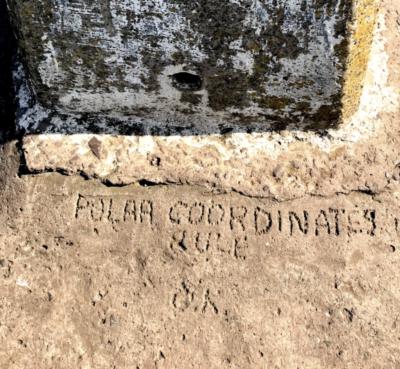Polar co-ordinates rule OK
29 Jun 2019

After a recent save-up I found myself in a position to buy a new gadget, and excitedly ran (I actually did run, as I was training for a 10k) to the Apple Store. It wasn’t an Apple product I was collecting, though: an Insta 360 One X was mine, and I couldn’t wait to get using it.
Having been given a VR headset as a very generous leaving gift from Owlstone, I had already begun to explore taking 360º (technically, spherical) photos, using Google Street Map app on my phone. This works well, but involves taking photos in lots of directions and waiting for the software to assemble them into a spherical image. That takes ages, and video is obviously impossible. I would definitely use it to capture a spherical image if I didn’t have my new camera on me, though.
The device is largely marketed as an action camera, the idea being that you can shoot action (it has almost magical stabilisation, and the selfie stick pretty much disappears from the images) and then frame it later, following the snowboarding/surfing subject and outputting a conventional “2D” video. It’s great fun, and some shots that would otherwise be nearly impossible are easy to get. I sort of had to restrain myself and deliberately concentrate on capturing spherical photos and videos.
I’m interested by this new type of photography and find it creatively challenging and inspiring. My new camera has got me doing things I wouldn’t otherwise do, and exploring places I wouldn’t otherwise visit, and that has to be a good thing.
Firstly, the idea of recording things in non-conventional ways appeals to me. (see previous blog posts). If you’re taking a photo or a video in every direction, you record everything. The viewer can choose to look away from your centrepiece, and look at the ceiling, or the floor, or your bookshelf. Accidentally recording things like this is exciting. I look forward to reviewing my captures in the distant future and noticing things that I otherwise wouldn’t have pointed a camera at.
Viewing photos and videos in every direction using a VR headset is particularly evocative. It’s clunky, with today’s tech, but that might change over time. One recommendation: use the “cast” feature if your VR headset has one, so that you can see what the wearer sees, and tell them what to click on, or have a conversation about what they’re looking at. This is a game changer. I’ve watched spherical videos captured by friends (cheers, Quentin) and felt, in a peculiar way, as if I had travelled alongside them. That’s partly due to Quentin’s special ability to have a one-sided conversation with a camera; a skill I most certainly do not possess! But I really got a kick out of sharing a recent trip to a fantastic beach with my Dad re-living it at our kitchen table thanks to Oculus Go.
Since the device records in every direction at once, it also forces composition to take place in the real world. There’s no zoom and no framing. (Aside: how does the viewer, who effectively experiences the scene through a handheld device with only one virtual eye, know how big they are in relation to the image? A spherical image from grass level doesn’t make you feel like you’re an ant, you just feel like your head’s on the floor - I’ve tried it. I think in real life one’s own self-size perception is determined by parallax - effectively the depth/3D difference arising from having two eyes, with a few centimetres between them. I am extra interested in future devices that might allow a person to feel very large or very small, by capturing stereoscopic images with variable inter-ocular distance)
This is creatively compelling, because you end up having to compose in the real world. Shooting from an unusual or apparently impossible angle, like up a tree:
Out of a (very strangely elongated) window:
Or even putting your own virtual head on the end of a punt pole! (amazing stabilisation demonstration. By the way, click and drag these or view in VR for optimal re-living experience)
I find it helps to tell a story with the image, like in the sand dunes photo below, or to reward the inquisitive viewer, perhaps by allowing them to peer around a corner, or find interesting things (bluebell woods) or surprising them if they look down (Ely cathedral):
Finally, capturing and displaying spherical images brings up the question of projection. Fun effects become possible, like “tiny planet”
and this one, which I don’t have a name for: video
Since pretty much every photo you capture with a spherical camera is a selfie, I recommend always wear sunglasses and avoid looking at the camera. Remain aloof.
(image for this blog post from the bottom of the trig point on Blackford Hill - a nice discovery and I approve of geeky graffiti)
Tags: geeky, photography
< Previous post | Next post >Favourite posts
- On wiggly lines and being normal
- On infinite villages
- Running a race backwards
- Brainmaking
- Their tables were stored full, to glad the sight
- The structure of a smell
Recent posts
- Start your holidays with a meta-alarm
- PGN files from handwritten chess notation
- Souvenirs des villes européennes
- Pic'n'mix reinvented
- Super slow-mo Tetris
Blog archives
Posts from 2012, 2013, 2014, 2015, 2016, 2017, 2018, 2019, 2020, 2021, 2022, 2023, 2024.